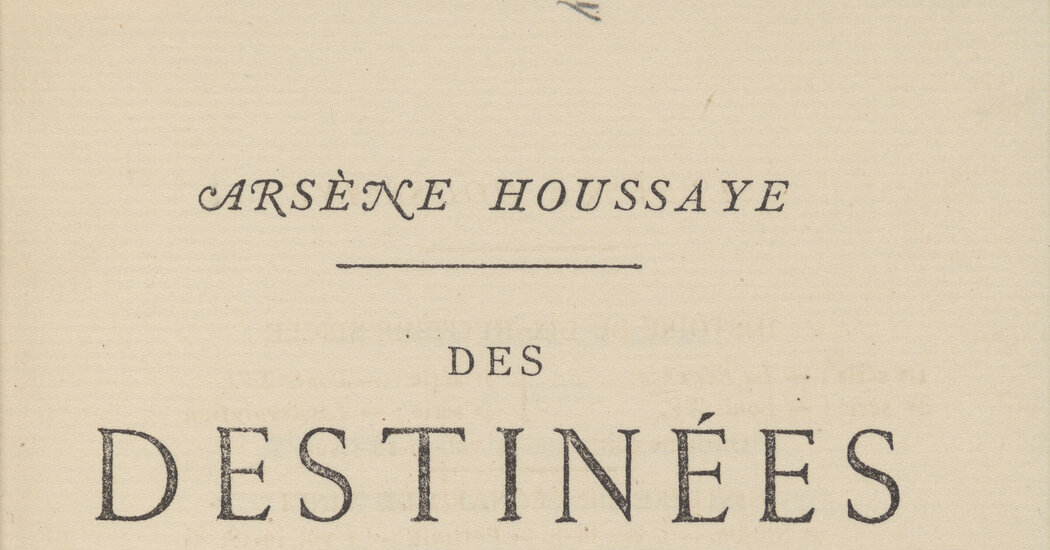- cross-posted to:
- andfinally@feddit.uk
- cross-posted to:
- andfinally@feddit.uk
The decision to find a “respectful final disposition” for human remains used for a 19th-century book comes amid growing scrutiny of their presence in museum collections.
Of the roughly 20 million books in Harvard University’s libraries, one has long exerted a unique dark fascination, not for its contents, but for the material it was reputedly bound in: human skin.
For years, the volume — a 19th-century French treatise on the human soul — was brought out for show and tell, and sometimes, according to library lore, used to haze new employees. In 2014, the university drew jokey news coverage around the world with the announcement that it had used new technology to confirm that the binding was in fact human skin.
But on Wednesday, after years of criticism and debate, the university announced that it had removed the binding and would be exploring options for “a final respectful disposition of these human remains.”



Okay, but I’m not sure why that’s any different from showing off the book sometimes or why Gage’s skull is acceptable but this book is not.
There is likely medical knowledge to gain from seeing and understanding Gage’s injury that can help other people with headwounds. Not from the binding of a book.
And that hasn’t been understood in the time period between 1820 and 2024?
And a cast of the skull wouldn’t be just as useful?
It has been understood by some for a long time, but not all. Especially when morbid curiosity is what brings visitors to your museum; without that morbid curiosity, you likely can’t make enough to stay open.
NAGPRA was renegotiated by a Native American Secretary of the Interior and, wouldn’t you know, having diverse voices helps people understand things differently, thus the massive change this year in the way museums display human remains. That’s a good thing. Be mad about the past so it doesn’t happen again, but also be glad that the display stops now.
As for using a cast, I’m sure they have one. But I don’t know if using one affects how medical research is conducted.
Oh yeah ETA: until the advent of the Internet, doctors coming to a place to examine collections of medical specimens was indeed the only way to do certain kinds of medical research.
Fair point. It is more about the psychology of the issue rather than the source material itself. The skull is as is. It was not reworked and processed and it stands as a natural and dark remainder of a common fate. The othet is a purposefully crafted ornament in a not natural context, which says more about the mind of the original crafter than a fact of nature.
That said, why remove it now. If amything that was even more of a curiosity, albeit a morbid one. I would have kept it. I am aware of legends and stories of such cruel local lords of the middle ages that they had a fabled chest decorated with human skin. Just a legend. But that speak of the reputation of a long gone family, doesn’t it?
Edit:
Even without that binding, the text itself still preserves some of its nature. It does make you feel uncomfortble, to know that the original author had done that on purpose.
I think it’s fine to keep both the skull and the book at this point. They were not taken in some sort of colonialist archaeological expedition or anything. I really don’t have a problem with either one. That was what I was trying to get at. Harvard is doing something that is performative. It does not make up for any major wrongdoing because there was no major wrongdoing in either case. Were both unethically procured? Sure. But it’s really not worth worrying about it the same way it would for a skeleton of an ancient Navajo or something.
I gather this has something to do with it. It’s the item that got the most attention due to of the way it was (allegedly, as I don’t have any examples) presented to the public by Harvard, which was deemed inappropriate. I guess if they would have handled the item more respectfully, it would not have gotten as much as a push to remove the binding as it did, because there are tons of books, shoes, wallets, etc and whatnot from back in the day that use human skin. Hell, even the original owner of Des Destinées de L’Ame had another book bound in skin.
So it seems it just came down to the handling and presentation.